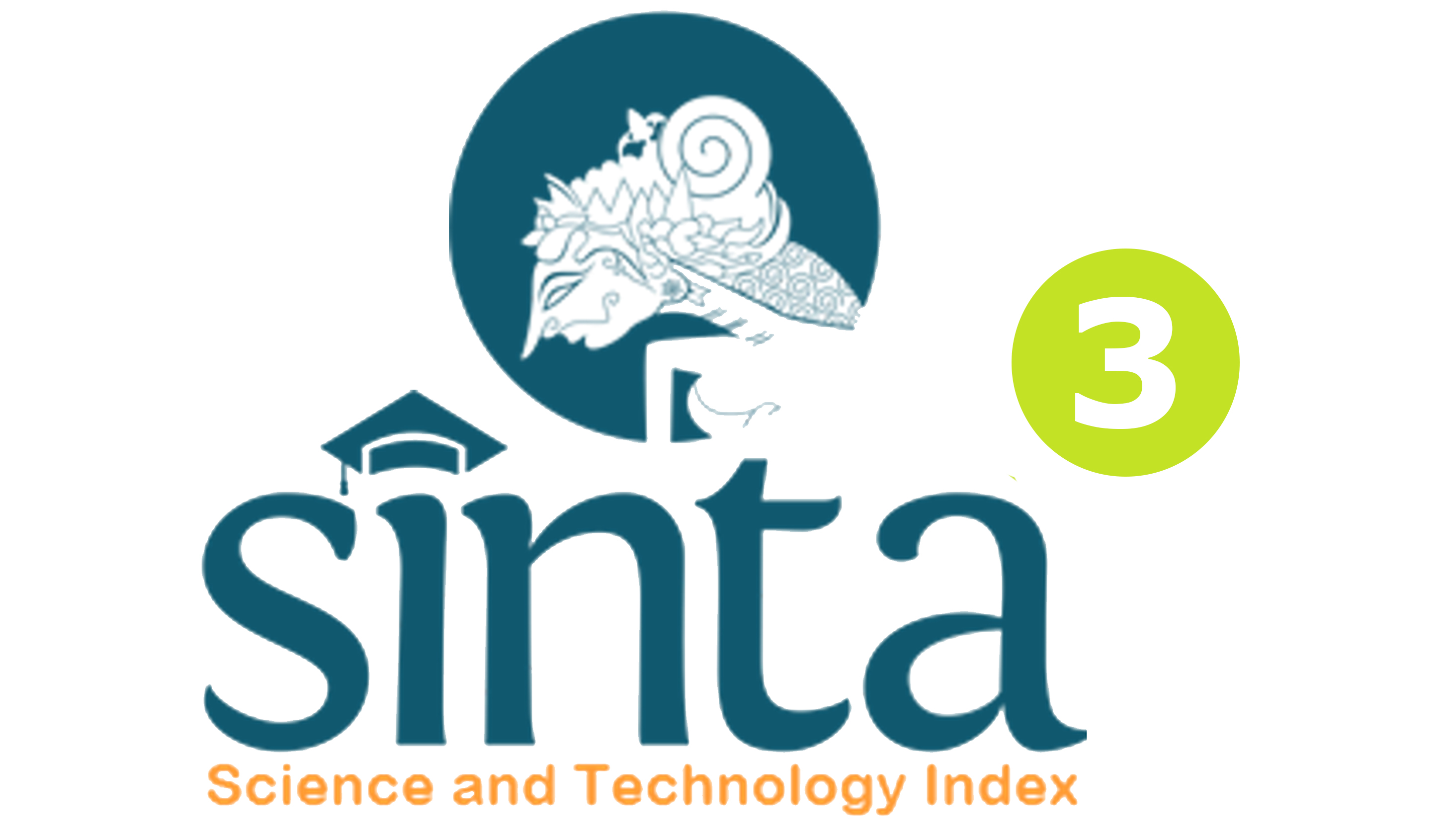Penerimaan Diri dengan Orientasi Masa Depan Pada Penyandang Tuna Netra di Panti Pelayanan Sosial Disabilitas Sensorik Netra (PPSDSN) Penganthi Temanggung
DOI:
https://doi.org/10.23887/jibk.v12i2.40061Keywords:
Penerimaan Diri, Orientasi Masa Depan, Penyandang Tuna netraAbstract
Abstract : Blind people experience various challenges in everyday life both with their personal and environmental so to have a future orientation requires self-acceptance. The purpose of this study was to find out the relationship between self-acceptance and future orientation in blind people in the Netra Sensory Disability Social Services (PPSDSN) Penganthi Temanggung. The study used quantitative methods with correlational design with 55 participants, taken with saturated sampling techniques. The self-acceptance variabel measurement instrument uses the Self-Acceptance Scale for Persons with Early Blindness scales of Morgado, Campana, and Tavares and the future orientation scale of the scale compiled by the researcher based on aspects proposed by Seginer. The results showed a significant positive relationship between self-acceptance and future orientation in visually impaired people in PPSDSN Penganthi Temanggung with r = 0.225 with sig = 0.049 (p <0.05) which means the better the self-acceptance of the individual, the better the future orientation and vice versa.
References
Aidinia, W., Haiyun, N., & Arum, S. (2013). Hubungan antara penerimaan diri dengan optimisme menghadapi masa depan pada remaja di panti asuhan. Psikodinamika, 6 (2), 1-12.
Azwar, S. (2010). Metode penelitian. Yogyakarta: Pustaka Pelajar.
Azwar, S (2017). Metode penelitian psikologi (ed.2). Yogyakarta : Pustaka Pelajar.
Fajarwati, N. (2016). Hubungan penerimaan diri dengan orientasi masa depan bidang pekerjaan pada waria di Tasikmalaya.Skripsi. Universitas Pendidikan Indonesia. Retrieved from http://repository.upi.edu/id/eprint/26756
Hurlock, E. B. (2004). Developmental psychology. Jakarta: Erlangga.
Hurlock, E. B. (2006). Psikologi perkembangan: Suatu pendekatan sepanjang rentang kehidupan (edisi kelima). Jakarta: Erlangga
Hurlock, E. B. (1986). Personality development. New Delhi: McGraw-Hill Inc.
Hurlock, E. B. (1974). Personality development. New Delhi : Hill Publishing Company.
Morgado,F.F.D.R., Campana, A.N.N.B., & Tavares, M.D.C.G.C.F. (2014). Development and Validation of the Self-Acceptance Scale for Persons with Early Blindness: The SAS-EB. Plos One, 9, Issue 9, 1-9. https://doi.org/10.1371/journal.pone.0106848
Mambela, S. (2018). Tinjauan umum masalah psikologis dan masalah sosial individu penyandang tunanetra. Buana Pendidikan: Jurnal Fakultas Keguruan Dan Ilmu Pendidikan, 14(25), 65 - 73. https://doi.org/10.36456/bp.vol14.no25.a1465
Nadira, A & Zarfiel, MD. (2013). Hubungan antara penerimaan diri dan kecemasan menghadapi masa depan pada mahasiswa fakultas Psikologi Universitas Indonesia. Fakultas Psikologi Univesitas Indonesia 2013, 41-44.
Nurmi, J.E. (1989). Adolescent orientation to the future: Development of interest and plans and related attributions and affect, in the life- span context. Helsinki: Societas Scientiarum Fennica.
Nurmi, J.E. (1991). Review : How do adolescents see their future? A review of the development of future orientation and planning. University of Helsinki, 11, 1-59.
Nurmi, J. E. (2004). Socialization and self-development: channeling, selection, adjustment, and reflection. In R.Lerner & L.Steinberg (Eds). Handbook of adolescent psychology (2nd ed, pp, 85-124). Hoboken, N.J: Willey.
Prakosa, P. W. (2012). Dimensi sosial disabilitas mental di komunitas Semin Yogyakarta. Jurnal Psikologi UGM, 32 (2), 61-73.
Kementrian Sosial. (2014). Buletin jendela data dan informasi kesehatan : Situasi penyandang disabilitas. Jakarta: Author.
Plummer, D. (2005). Helping adolescents and adults to build self-esteem. USA: AthenaeumPress.
Rahmah, St. (2019). Penerimaan diri bagi penyandang tuna netra. Alhadharah: Jurnal Ilmu Dakwah, 18, (2) 1-16
Sari, E.P. & Sartini, N. Penerimaan diri pada lanjut usia ditinjau dari kematangan emosi. Jurnal Psikologi UGM, (2) 73-88. Doi 10.22146/jpsi.7017.
Seginer, R. (2009). Future orientation: Developmental and ecological perspectives. Heifa: Springer.
Seginer, R. (2003). Adolescent future orientation: an integrated cultural and ecological Perspective. Online Readings in Psychology and Culture, 6, 5
Smart, A. (2010). Anak cacat bukan kiamat: metode pembelajaran dan terapi untuk anak berkebutuhan khusus. Yogyakarta: Ar-Ruzz Media.
Statman, D. (1993). Self-assessment, self- esteem and self-acceptance. Journal of Moral Education. 22 (1), 55-62.
Thohari, S. (2014). Pandangan disabilitas dan aksesibilitas fasilitas publik bagi penyandang disabilitas di Kota Malang. Indonesian Journal of Disability Studies, 1, 27-37.
Urbig, D., & Monsen, E. (2012). The structure of optimism: “Controllability affects the extent to which efficacy beliefs shape outcome expectancies”. Journal of Economic Psychology, 33 (4), 854-867.
Wahyudi, A. (2007). Penerimaan diri dengan kecemasan terhadap masa depan pada remaja panti asuhan. Skripsi. Yogyakarta : Fakultas Psikologi dan Ilmu Sosial Budaya Univeristas Islam Indonesia. Retrieved from https://dspace.uii.ac.id/bitstream/handle/123456789/31917/02320111%20Akhmad%20Wahyudi.pdf?sequence=1&isAllowed=y.
Widianti, dkk. (2009). Pengaruh Pelatihan Perencanaan Diri Terhadap Orientasi Masa Depan Remaja Di Panti Asuhan Kabupaten Cianjur. Majalah Keperawatan Unpad. 10 (19), 27.
Downloads
Published
Issue
Section
License
Copyright (c) 2021 Glorius Anugerah

This work is licensed under a Creative Commons Attribution 4.0 International License.
Jurnal Ilmiah Bimbingan Konseling Undiksha is an Open Access Journal. The authors who publish the manuscript in this journal agree to the following terms:
JIBK is licensed under a Creative Commons Attribution 4.0 International License. This permits anyone to copy, redistribute, remix, transmit and adapt the work provided the original work and source is appropriately cited.
This means:
Jurnal Ilmiah Bimbingan Konseling is licensed under a Creative Commons Attribution 4.0 International License.
(1) Under the CC-BY license, authors retain ownership of the copyright for their article, but authors grant others permission to use the content of publications in JIBK in whole or in part provided that the original work is properly cited. Users (redistributors) of JIBK are required to cite the original source, including the author's names, JIBK as the initial source of publication, year of publication, volume number, issue, and Digital Object Identifier (DOI); (2) The authors are the copyright owner of the article, and the author grants the JIBK held the first publication right.









.png)

.jpg)
